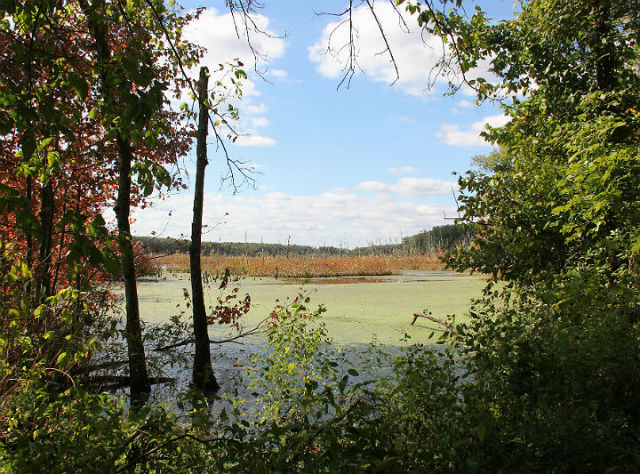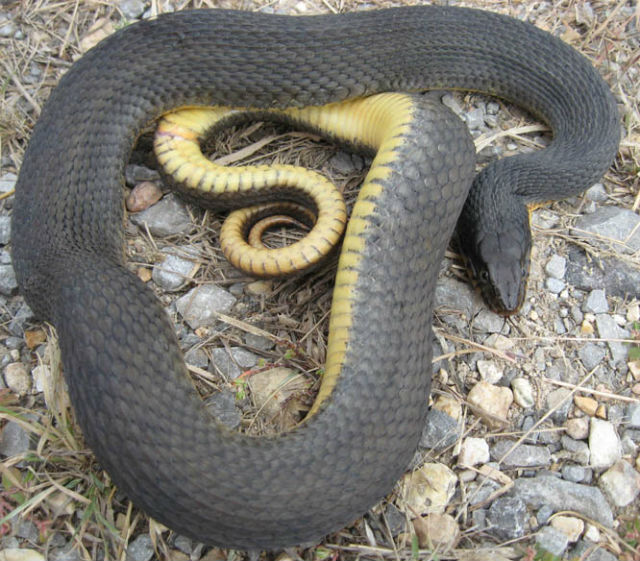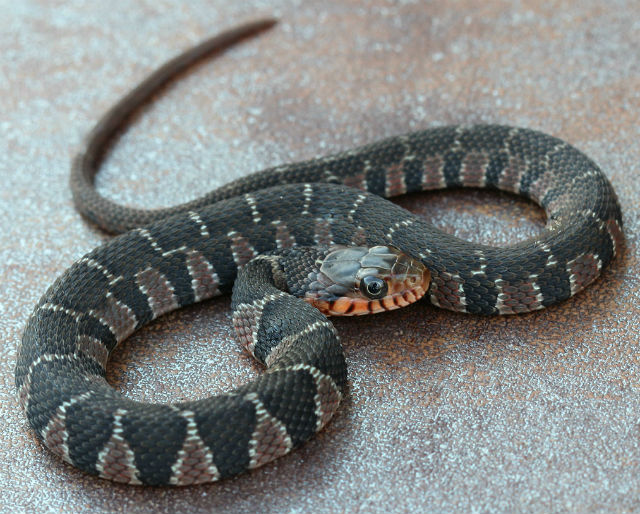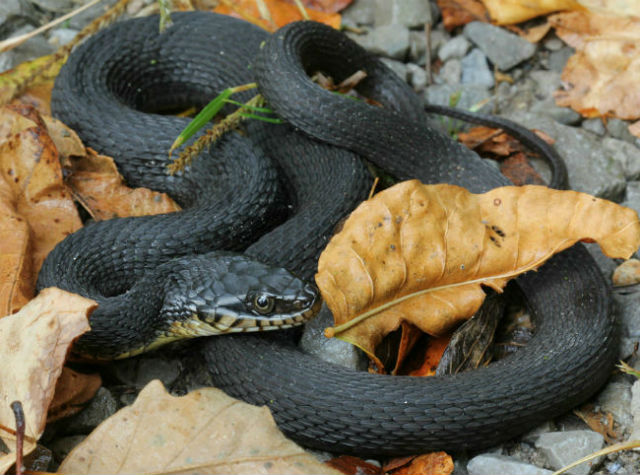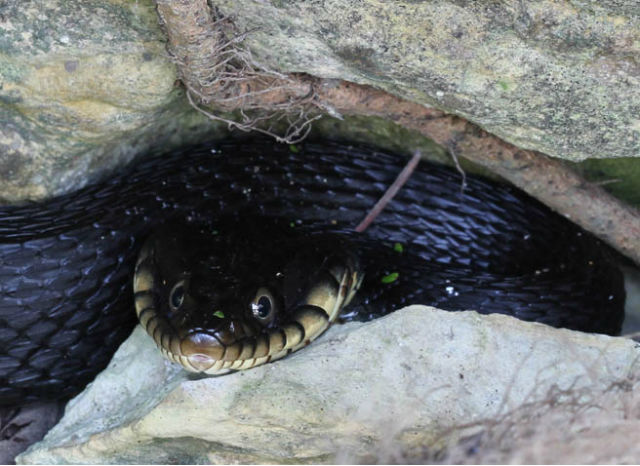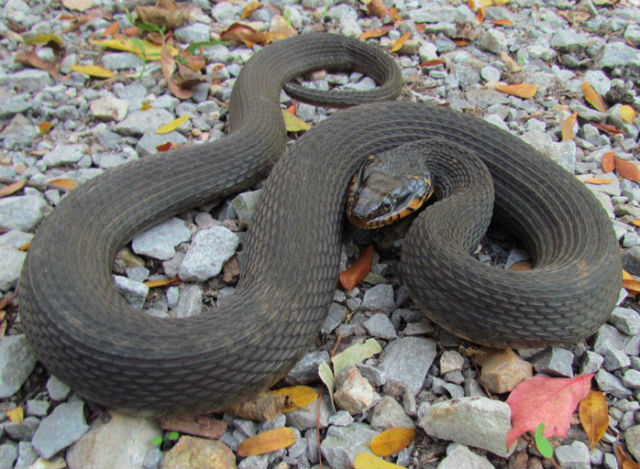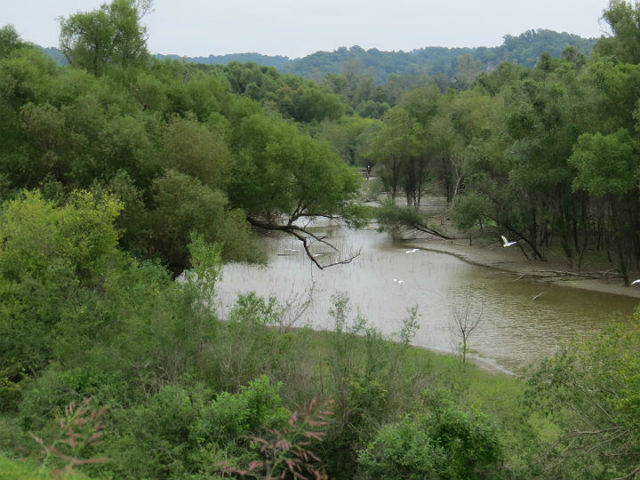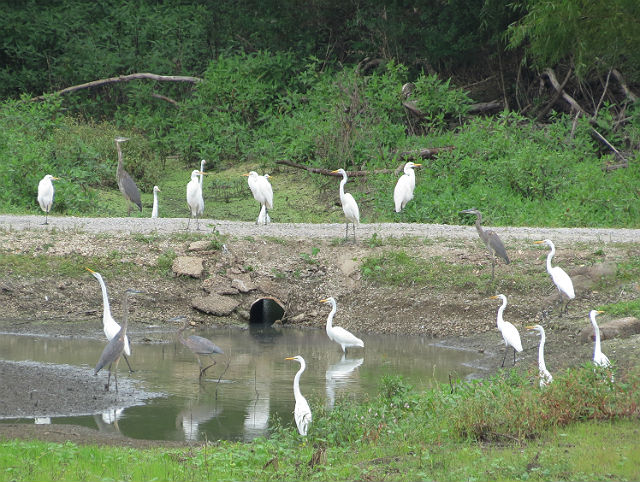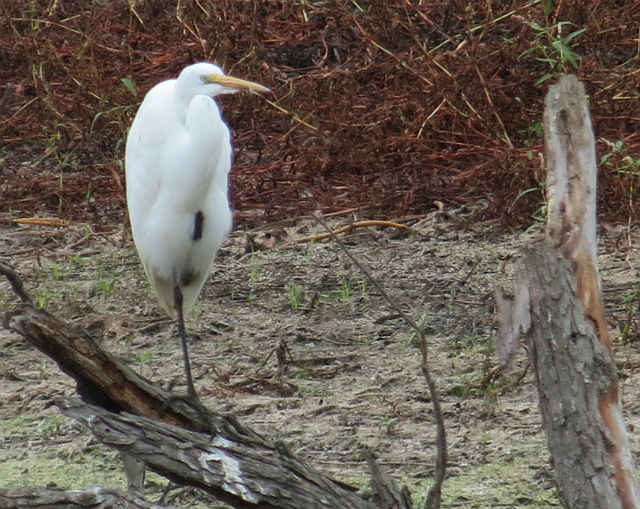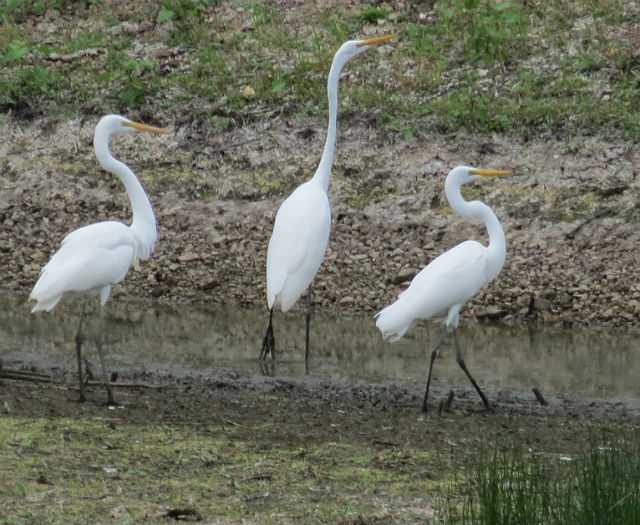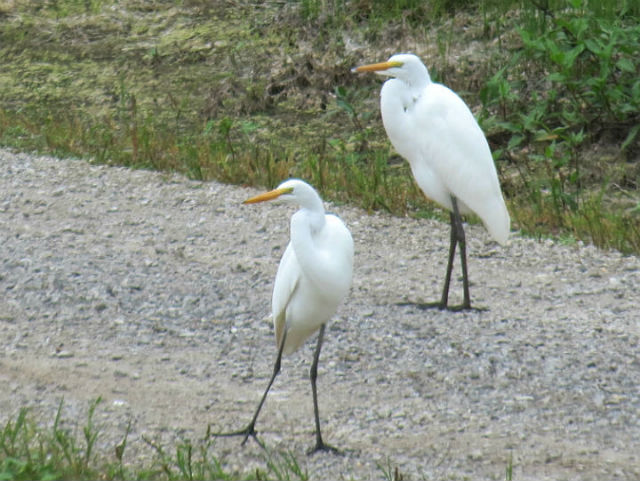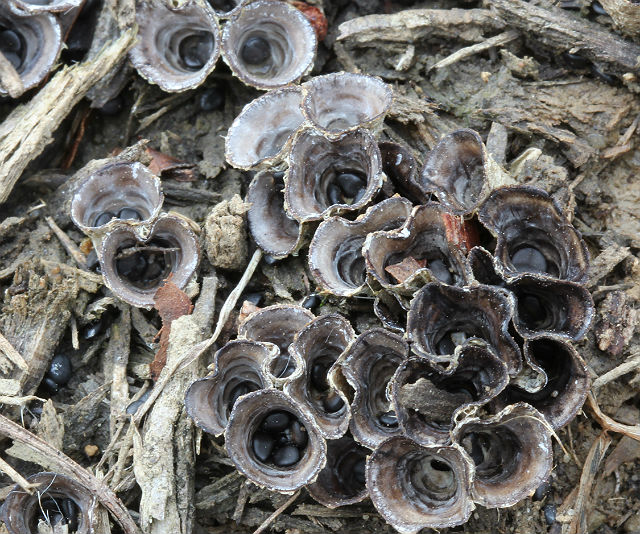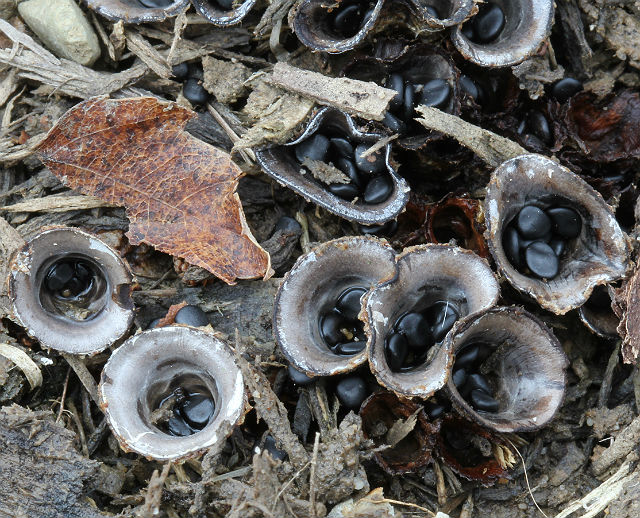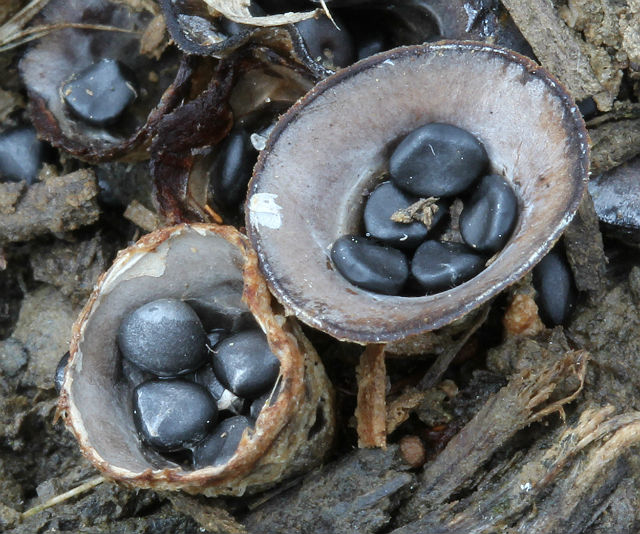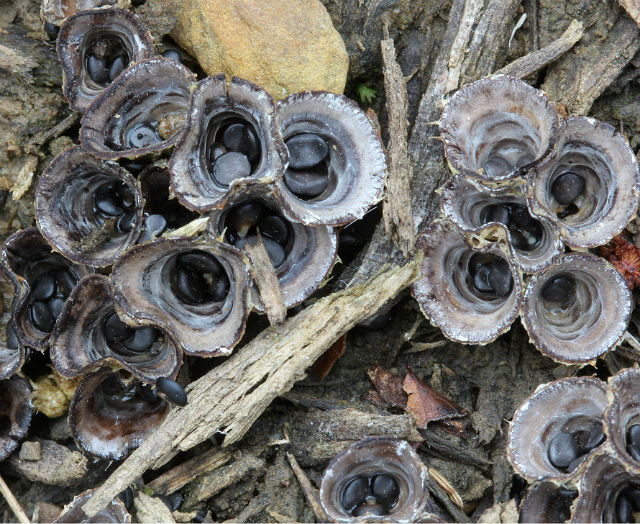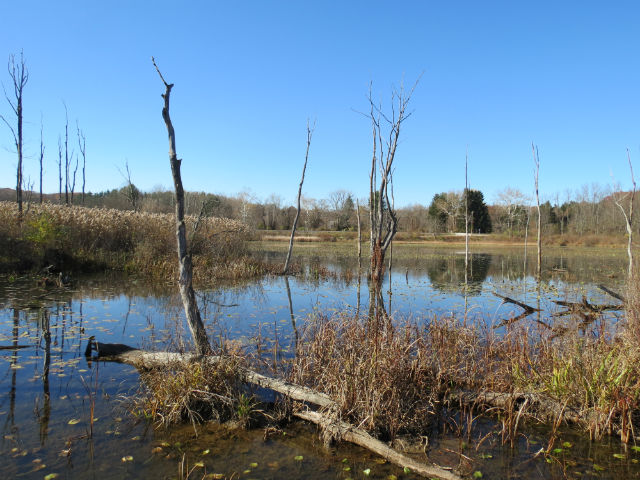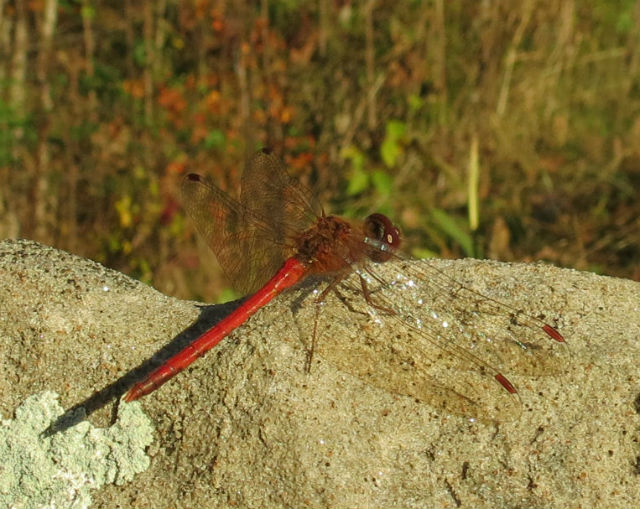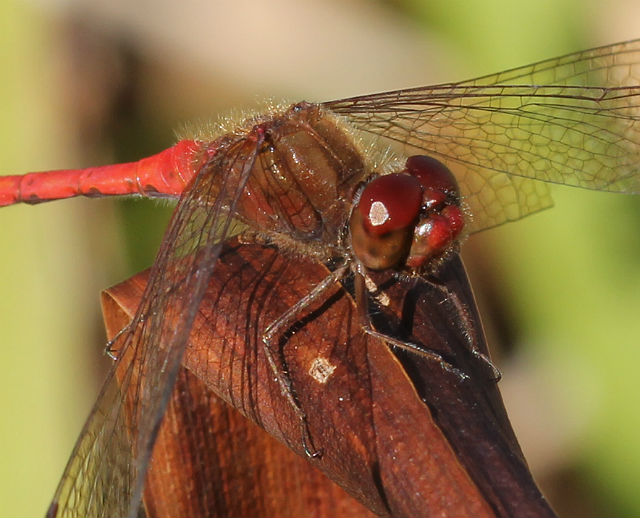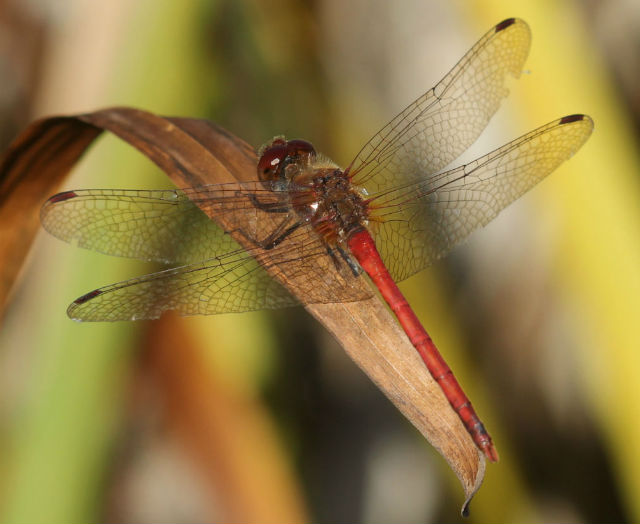This is the most commonly encountered water snake on my recent trip to southern Illinois. It is named for its yellow belly. Its coloration is mainly gray or greenish with little or no pattern.
Like other species of water snakes, Yellow-bellied Water Snakes give birth to live offspring. The young are pale gray, with a pinkish cast on the sides, with squarish, alternating blotches. These markings begin to disappear during their second year.
Yellow-bellied Water Snakes are a species that is found in swamps, lakes and ponds – where it can be seen basking on overhanging branches or logs in the water.
Water snakes are not constrictors; they simply overpower their food. This species has a preference for frogs, toads, tadpoles and salamanders – but it also eats fish and crayfish.
The Yellow-bellied Water Snake is less aquatic than the other water snakes. During hot, humid weather, it will travel considerable distances away from water. It is unique among water snakes in that it often flees onto land, instead of diving underwater when approached like most species of water snakes.
I enjoy encountering these reptiles, which are quite different looking than the Northern Water Snakes I commonly see in my home state of Ohio.

